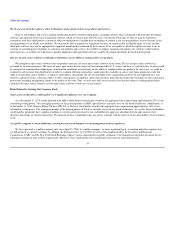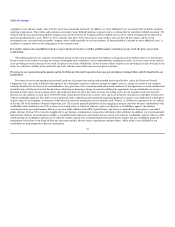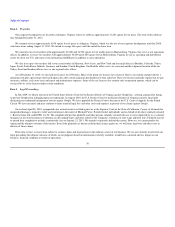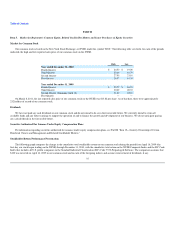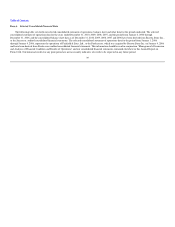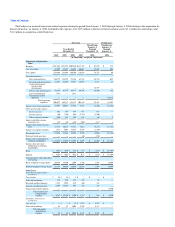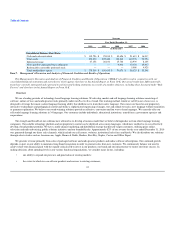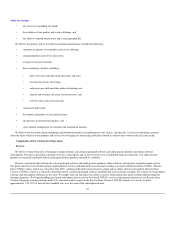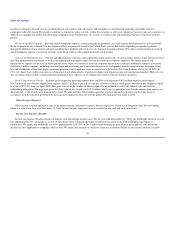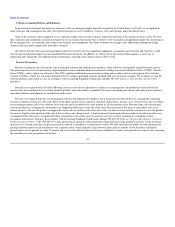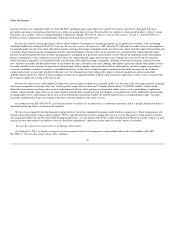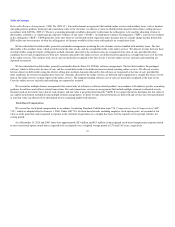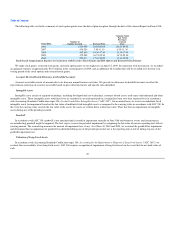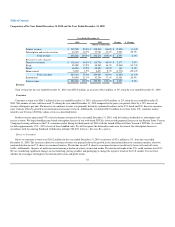Rosetta Stone 2010 Annual Report Download - page 46
Download and view the complete annual report
Please find page 46 of the 2010 Rosetta Stone annual report below. You can navigate through the pages in the report by either clicking on the pages listed below, or by using the keyword search tool below to find specific information within the annual report.
Table of Contents
We sell our solutions directly to individuals, educational institutions, armed forces, government agencies and corporations. We distribute our consumer
products predominantly through our direct sales channels, primarily our websites and call centers, which we refer to as our direct-to-consumer channel. We
also distribute our consumer products through our kiosks, which we own, as well as through select retailers. The majority of our consumer customers purchase
our packaged software and audio practice products, online software subscriptions and professional services. We sell to institutions primarily through our
direct institutional sales force. Many institutions elect to license our products on a subscription basis. For purposes of explaining variances in our revenue, we
separately discuss changes in our consumer and institutional sales channels because the customers and revenue drivers of these channels are different. We
anticipate that revenue growth in 2011 will slow and revenue associated with the U.S. Consumer business may decline.
For the year ended December 31, 2010, we reclassified our home school sales vertical from Institutional to Consumer. We believe the drivers of
acquiring a home school customer are more aligned with a typical sale in our consumer sales vertical. Prior year information has been modified to conform to
current year presentation. This presentation is also consistent with how we manage the home school channel.
Our consumer revenue is affected by seasonal trends associated with the holiday shopping season. As a result, our fourth quarter ended December 31,
2010 accounted for 29% of our annual revenue in 2010. Our institutional revenue is seasonally stronger in the second and third quarters of the calendar year
due to education and government purchasing cycles. We expect these trends to continue.
Cost of Revenue
Cost of product revenue consists of the direct and indirect materials and labor costs to produce and distribute our products. Such costs include packaging
materials, computer headsets, freight, inventory receiving, personnel costs associated with product assembly, third-party royalty fees and inventory storage,
obsolescence and shrinkage. Cost of subscription and service revenue primarily represents costs associated with supporting our online language learning
service, which includes hosting costs and depreciation. We also include the cost of credit card processing and customer technical support in both cost of
product revenue and cost of subscription and service revenue. Cost of revenue will also increase as a percentage of revenue in future periods as a result of our
launch of Rosetta Stone Version 4 TOTALe, which includes services that have higher direct costs to deliver to customers than our existing software solutions.
Operating Expenses
We classify our operating expenses into three categories: sales and marketing, research and development and general and administrative.
Our operating expenses primarily consist of personnel costs, direct advertising and marketing expenses and professional fees associated with contract
product development, legal, accounting and consulting. Personnel costs for each category of operating expenses include salaries, bonuses, stock-based
compensation and employee benefit costs.
Sales and Marketing. Our sales and marketing expenses consist primarily of direct advertising expenses related to television, print, radio, online and
other direct marketing activities, personnel costs for our sales and marketing staff, rental payments for our kiosks and commissions paid to our sales
personnel. Sales and marketing expenses also include amortization expense of intangible assets related to customer relationships associated with the 2006
acquisition of Fairfield & Sons, Ltd. These intangible assets were fully amortized by January 2009. In 2007, we began to make significant investments to
expand our sales and marketing operations in Europe and Japan. In 2009, we began to make significant investments to expand our sales and marketing
operations in South Korea, and in 2010 we established
43


